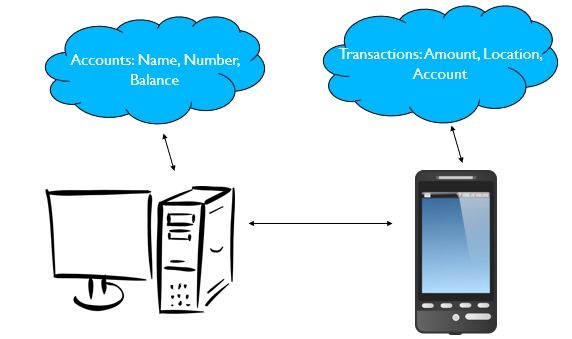Web and Mobile Development - RESTful Calls
Activity Goals
The goals of this activity are:
- To explore Representational State Transfer (REST) as applied to HTTP web calls
- To articulate the basic RESTful operations and map those to HTTP standard verbs
- To identify arrays of objects, and elements within objects, of JSON structures
The Activity
Directions
Consider the activity models and answer the questions provided. First reflect on these questions on your own briefly, before discussing and comparing your thoughts with your group. Appoint one member of your group to discuss your findings with the class, and the rest of the group should help that member prepare their response. Answer each question individually from the activity, and compare with your group to prepare for our whole-class discussion. After class, think about the questions in the reflective prompt and respond to those individually in your notebook. Report out on areas of disagreement or items for which you and your group identified alternative approaches. Write down and report out questions you encountered along the way for group discussion.
Model 1: RESTful Resources
Questions
- What part of the URL represents the tweet ID?
- How do we know which user made that tweet?
- What CRUD verb do you think is executed on this URL (Create, Read, Update, Delete)?
- What HTTP verb do you think is executed (POST, PUT, DELETE)?
- What is the noun in this transaction?
- What changes in the URL if we want to get a different tweet from the same user?
Model 2: RESTful Exchanges
Questions
- Modify the program to print out the length of daylight (between sunrise and sunset) in hours, minutes, and seconds. Note that the sunrise and sunset times are given in Unix epoch time, which is the number of seconds that have elapsed since January 1, 1970.
Embedded Code Environment
You can try out some code examples in this embedded development environment! To share this with someone else, first have one member of your group make a small change to the file, then click "Open in Repl.it". Log into your
Repl.it account (or create one if needed), and click the "Share" button at the top right. Note that some embedded Repl.it projects have multiple source files; you can see those by clicking the file icon on the left navigation bar of the embedded code frame. Share the link that opens up with your group members. Remember only to do this for partner/group activities!
Submission
I encourage you to submit your answers to the questions (and ask your own questions!) using the Class Activity Questions discussion board. You may also respond to questions or comments made by others, or ask follow-up questions there. Answer any reflective prompt questions in the Reflective Journal section of your OneNote Classroom personal section. You can find the link to the class notebook on the syllabus.
